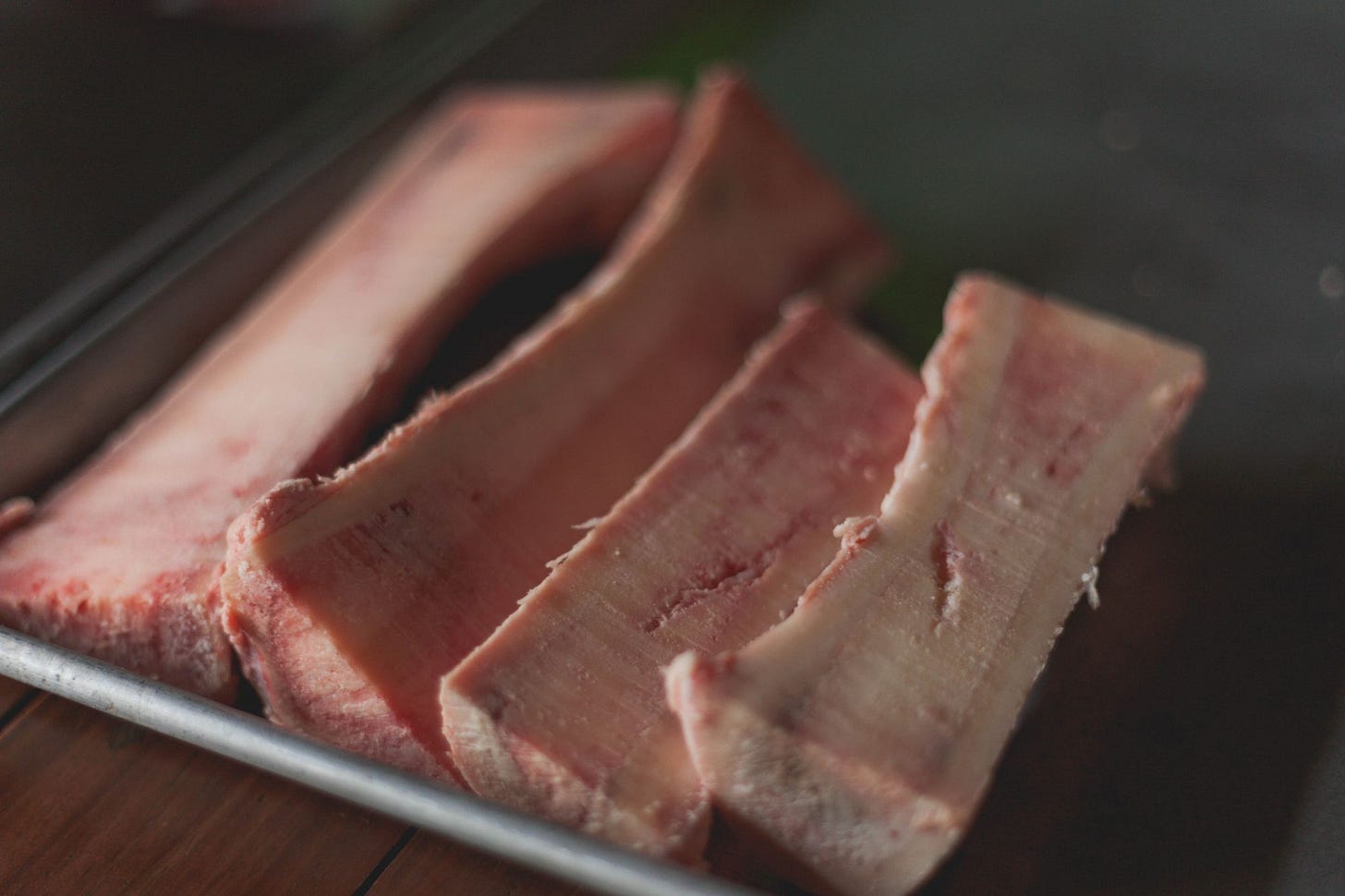Marrow
The Dietary Commonality between Wolves, Vultures — and Humans
One of the interesting things about reading textbooks about ancient humans is learning about how the human diet has changed — and how it's stayed the same. A lot of archaeological work involves digging through midden piles for detritus, and a lot of the trash archaeologists use comes from pottery shards and discarded bones. I've been cooking a lot of bone broth lately, and it got me to wondering — how else are bones used for food?
Quick Facts
Bone marrow is highly caloric and nutrient dense, making it one of the first "brain foods" available to early humans.
Dogs and wolves, when given carcass scraps, will gravitate toward cracking bones with high marrow content
The taste of bone marrow is described as possessing a subtle, creamy nuttiness that is rich and sometimes sweet.
The modern marrow spoon was developed in the 1680s.
Bone marrow makes up about 4% of an adult human's weight.
Cracking the Bone
Tool use was an advantage early humans had in terms of getting at bone marrow; it's best done with something like an axe or saw, or a big rock... or the ability to fly; vultures crack bones by dropping them from up high. [Read More]
Getting the Marrow
Cracking open large bones to get at the marrow inside takes either skill (sucking the marrow from the bone) or tools (to break open the bone; this is more often done to aid children). It is still considered an important part of a social meal in some parts of the world, much the same way that eating crabs is a lengthy social occasion in my home state of Maryland. [Read More]
Keep reading with a 7-day free trial
Subscribe to Manuscriptions to keep reading this post and get 7 days of free access to the full post archives.

